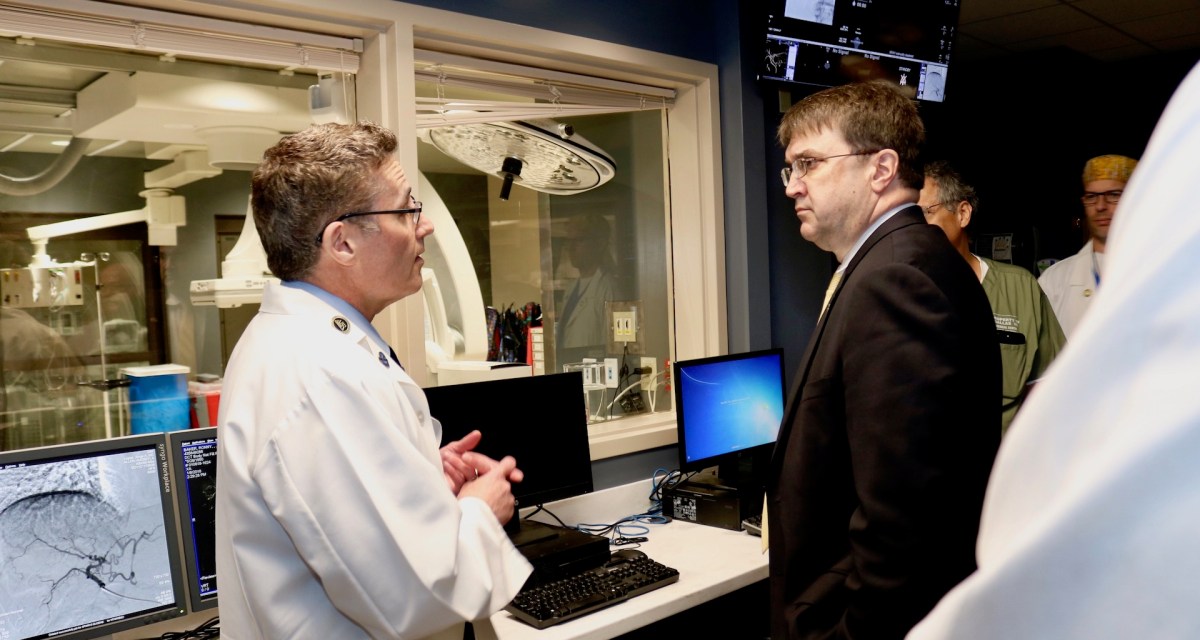VA software shuffle could delay national rollout of patient scheduling

The Department of Veterans Affairs’ recent decision to fast-track new patient-scheduling software instead of a successfully piloted platform could mean it will be several more years before veterans facilities nationwide have modernized scheduling functionality.
VA leaders late last year made the call to move up development of patient-scheduling functionality built by Cerner, the company that’s also building the department’s $16 billion modernized electronic health record system. In doing so, the VA will forgo prior progress made through a pilot at VA’s Columbus, Ohio, facility.
The Cerner-built system will replace the one at the center of the department’s 2014 scheduling scandal, in which several veterans died while waiting for care. That older system, known as VistA, remained in place everywhere except Columbus, where the $32 million pilot by health care software provider Epic and systems integrator Leidos showed great promise. Called the Medical Appointment Scheduling System (MASS), it improved wait times and increased the number of completed appointments after its implementation in 2017.
For a while, Leidos appeared to have the inside track on providing the nationwide replacement system. The VA had entered into a $623 million contract with the company in 2015 to roll out functionality in five years, but work was paused until the 2017 pilot. Leidos said after the pilot it was confident it could deliver nationwide functionality in two years and for less than $350 million.
A separate agreement with Cerner, though, essentially got in the way. Because VA is investing billions in a Cerner-based modernized EHR platform, it’s no surprise that it would choose to also adopt Cerner’s scheduling portal at some point for the seamlessness of the two platforms. But it was anticipated, until recently, that VA would continue developing MASS nationwide before turning to Cerner scheduling down the road.
“Given that Cerner was awarded a no-bid contract to replace VistA, we recognized VA would likely be required to use Cerner scheduling at some point in the future,” Meghan Roh, an Epic spokesperson, told FedScoop in an email. “We thank VA, our partners, and the team at the Columbus VA Ambulatory Care Center for their work on a wonderfully successful scheduling pilot.”
Now, with the progress of the Epic-based MASS abandoned, VA officials aren’t sure exactly when patient scheduling functionality will arrive at medical facilities across the nation. John Windom, executive director of VA’s Office of Electronic Health Record Modernization, told a Senate Appropriations subcommittee Tuesday the VA will look to deploy the Cerner scheduling solution at three select facilities in the Pacific Northwest after March 2020, when those locations reach initial operating capability (IOC) under the larger EHR modernization program. The VA will also likely look to launch the scheduling functionality at other facilities out of sequence with the EHR deployment.
“We have committed to deploying a Cerner scheduling module out of sequence post-IOC,” Windom said. “The intent is to leverage the learnings of IOC to deploy” the scheduling module.
But from there, things are unclear, because, according to Windom and his team, they plan to address the rollout based on the success of the first few sites.
“The timeline for that has yet to be fully flushed out because we have not developed fully our execution strategy, but we expect that to start shortly after we achieve IOC milestones in March of 2020,” he said. He also couldn’t give an estimate for how much the Cerner scheduling portal rollout might cost. And until then, veterans and care providers are stuck scheduling under VistA, the same program at the center of the 2014 crisis.
Lawmakers were disappointed to hear of VA’s decision to abandon the successful MASS for an uncertain start from scratch with Cerner.
“Almost five years after the scheduling problems at the VA came to light, the VA is telling Congress that veterans are going to have to wait another five years or more for nationwide deployment of a modern scheduling system — a system that the VA hasn’t tested and doesn’t know the capabilities of… I have to tell you I’m skeptical,” said Sen. Tammy Baldwin, D-Wisc. “Our veterans have waited too long, and we’ve spent over $30 million on a canceled scheduling pilot that showed tremendous progress and promise.”
Under VA’s plan, it will take a decade from the point of IOC for the Cerner EHR to be fully operational across the U.S. The concern is that the VA and Cerner will roll out scheduling functionality on a similar timeline.
“You’re going to have to find a way to do that much more rapidly,” said Sen. John Boozman, R-Ark., adding that a “10-year reprogramming of that is simply unacceptable.”
James Byrne, acting VA deputy secretary, said it will be “well before 10 years that the scheduling solution will be across the United States.” He said the “separate” but concurrent effort to roll out the scheduling system at facilities not in line with the EHR deployment, that should cut down the time.
“I’m not going to say it’s going to be in four or five years, but that is probably more likely than” 10 years, said Byrne, who is also VA’s general counsel.
“We intend to get scheduling out to our veterans as soon as we possibly can,” Windom said.






